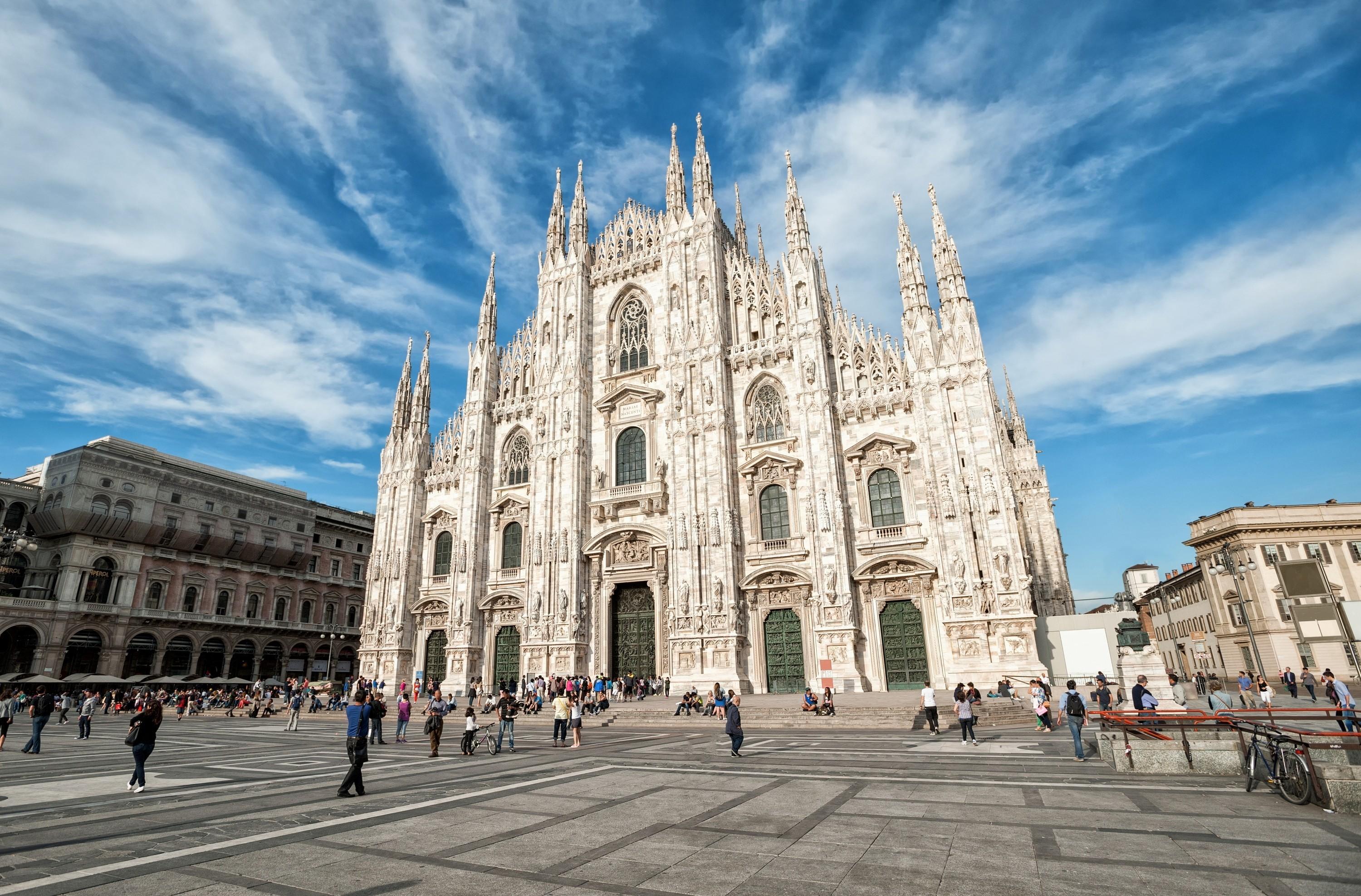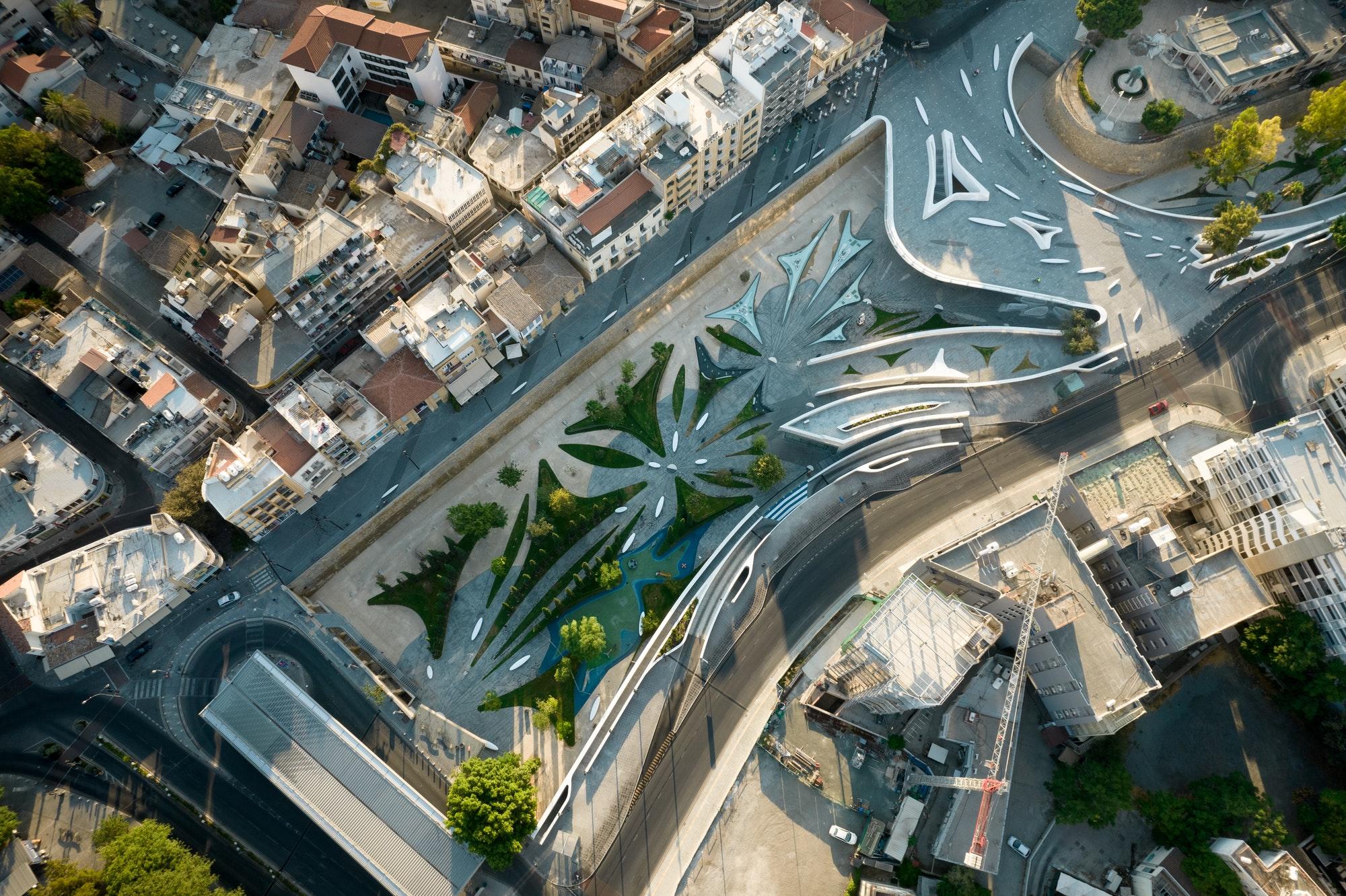Constructing is a complicated business and not the fastest. Besides, as they say, what is done quickly is not of high quality. It is hard to disagree with this.
But there are projects in the world whose realization period has exceeded all conceivable and unthinkable limits. Some remain frozen for so long that they become symbols of neighborhoods and heroes of urban legends. If you think that the problem of long construction projects does not concern Cyprus, you are mistaken. The island has a lot to boast about.
At least one Cypriot project can be included in the list of the 10 most famous construction projects in the world. Be sure to read to the end to find out which Cypriot construction site we are talking about.
The Great Wall of China in the People's Republic of China (2 thousand years old)
The Great Wall of China is the grandest defense structure ever built and one of the man-made wonders of the world. It stands in the northern part of the modern People's Republic of China. "The Long Wall of 10,000 Li," as the Chinese themselves call it, has long been a symbol of the country. It is one of the first sights that tourists in China strive to get to.
It is believed that the creation of the wall began in the III century BC during the period of the Battle Kingdoms. At that time, China was not united - small states were at war with each other. Northern states began building the first sections to protect themselves from attack by nomadic tribes. They were attracted by the richer Chinese cities and plundered them. Under Emperor Qin Shi Huangdi, the Chinese lands were unified. He ordered the construction of a single wall to begin along the Yingshan Mountains, located in the north of present-day China. Earlier buildings were incorporated and reinforced.
Construction lasted about 10 years. The wall was built right along the mountains, hills and gorges. It was very difficult. Up to 2 million people were involved in the construction during the Qin Dynasty alone. Horrible working conditions and epidemics led to the death of numerous workers. The towers were part of the wall and were built at a distance of up to 200 meters from each other - at such a distance arrows could fly. Within 10 km from each other there were signal towers where sentries were on duty. There were several gates in the wall for passage.
The next dynasties strengthened, rebuilt and lengthened the wall. Up to our time mainly reached the sites that were created during the Ming dynasty in the XIV-XVII centuries. These are the latest constructions. The construction ended in the middle of the XVII century. More than 1 million people died during the construction of this site, which allows you to consider it the longest cemetery in the world.

Cologne Cathedral in Germany (632 years)
On August 15, 1248, the foundations of the Gothic Cologne Cathedral, Germany's most visited architectural landmark, were laid. At the time of its completion in 1880, after more than six centuries of construction, the cathedral had been the tallest structure in the world for several years, later losing that record of its time to the American George Washington Monument. The erection of the church took place over a period of time, during which time a dozen craftsmen were replaced on the captain's bridge of construction, each of whom saw the "correct" appearance of the cathedral in his own way. There is a legend in Germany that the first architect of the Cologne Cathedral sold his soul to the devil to fulfill a truly brilliant drawing. The devil agreed, but promised that the cathedral would collapse as soon as its construction stopped. In any case, this is how tourists are explained the fact that restoration work in the temple is going on almost around the clock.
Near the Cologne Cathedral almost always blows wind, even when there is absolute calm around. The air currents, bumping into the 157-meter high Gothic towers, rush downwards, having met such an unexpected obstacle in the middle of the wide Rhine valley. The medieval Gothic giant stands surrounded by twelve Romanesque churches of Cologne, as if frozen around it in an eternal round dance. The most prominent of these is the Great St. Martin on the riverbank in the Old Town.

St. Vitus Cathedral in the Czech Republic (over 600 years old)
One of the architectural masterpieces of Prague can rightfully be called St. Vitus Cathedral - the main Catholic church of the Czech Republic, the spires of which can be seen from almost anywhere in the city. Combining Gothic, Renaissance and Baroque architecture, the church was built over 600 years! The construction of the cathedral cost Prague an incredible amount of money: at that time taxes were increased to the limit and the trade in indulgences flourished.
The architect Mathieu from Arras died 8 years after the beginning of the construction of the cathedral, and Petr Parlerz was invited to continue his work, who led the construction for more than 40 years. After Parlerge's death, his three sons continued his work, but their labors were interrupted by the Hussite wars, during which the altars and some interiors were badly damaged. The difficulties in the construction did not end there: in 1541 it suffered a severe fire, in 1619 during the uprising Protestants took out all the decorations, during the War of the Austrian Succession the cathedral came under artillery fire, and 3 years later lightning struck the dome of the main tower and split it in two. The dome was restored by the architect Nicolo Pacassi, who gave it a Baroque look.
For a long time after that no construction works were carried out in the St. Vitus Cathedral, and only in 1861 the Society for the Completion of the Cathedral was organized, and thanks to its efforts by 1929 the centuries-old construction was completed. During the construction of St. Vitus Cathedral, 10 architects were replaced, as well as many famous artists and sculptors, each of whom made their own contribution and imprint of their era to this large-scale construction. Today St. Vitus Church is the main cathedral of the Prague Archbishopric and the tomb of Czech kings, princes and saints. St. Wenceslas, Jan of Nepomuk and Charles IV himself are buried here.

Duomo Cathedral in Milan, Italy (over 579 years old)
The world's largest white marble structure, and one of the most admired places in Milan, the Cathedral of Santa Maria Nasciente (Duomo) was built from the late XIV to the middle of the XX century. To be more precise, no less than 579 years! It is a symbol of the Catholic faith for the inhabitants of the city and the country. The Dome Cathedral, striking with its size and unique mix of architectural styles, is made entirely of white marble. The monumental building is second in size to only three Christian churches in the world - St. Peter's Cathedral in Vatican (La basilica di San Pietro in Vaticano), Seville Cathedral and St. Paul's Cathedral in London.
The story of the Cathedral begins as a dream, and a terrible dream at that. According to legend, one night in 1386, the devil appeared in a dream to Gian Galeazzo Visconti and ordered him to build a building decorated with many demonic images. In case of disobedience, the soul of the ruler would be condemned to eternal torment. Gian Galeazzo Visconti, tormented by the fires of hell, with the knowledge of Archbishop Antonio Da Saluzzo, began construction of an architectural work of art containing satanic images.
Gian Galeazzo died in 1402, never having seen the completed work, which took more than 500 years of hard, unrelenting labor. Milan Cathedral, of course, was not built in honor of the devil, but in honor of the Holy Virgin Mary. But by its theme, interior and exterior decoration (96 sculptural compositions out of 3400 were of demonic character) reminds of its mystical origin. The construction of the Duomo was started in 1388 and continued until the beginning of the XIX century due to constant suspensions and changes in the project. As a result, Milan Cathedral is not one historical style, but a peculiar mixture. A reinterpretation of Gothic, which was later called Flaming Gothic.

Sagrada Familia Church in Catalonia (over 140 years old)
The Sagrada Familia Church in Barcelona has been under construction since the late 19th century. The world-famous architectural masterpiece is the brainchild of the genius Antoni Gaudi. The master gave the last 40 years of his life to this cathedral. For him it was the most ambitious project, in which Gaudi invested his whole body and soul, turning it into a great work. Despite the fact that the project of the temple is not yet finished, the original work is included in the UNESCO World Heritage List.
It is noteworthy that the first construction project was proposed by Francisco del Villar, but in 1883 the architect was replaced by Gaudi, who made significant changes to the work. The initiators of the construction of the church unanimously decided that the construction will be carried out only at the expense of donations. Allegedly this would make the project truly sacred: a holy place, a stunning building and "holy" money. In 2010 there was a lighting of the temple, which was conducted by Pope Benedict XVI, after which the temple was ready for daily services. On the day of consecration, the Pope gave the cathedral a "modest" new title - Small Papal Basilica. The non-standard exterior of the church immediately made it a trademark of Barcelona. On the territory of the Sagrada Familia Cathedral are located: the Chapel of the Rosary, the crypt where the architect was buried, and the facade of the Nativity. The construction has still not come to an end, it is believed that the whole problem is the stone blocks - the columns that support the vault. They are so original that it is not easy to make them, even with the use of computer modeling. Each block is unique and this makes the work very difficult.

The Cathedral of St. John the Evangelist in the United States (over 137 years old)
Its construction was started in 1892, but it still stands unfinished. The area of the temple is about 11 thousand m2, which allows it to claim the title of one of the largest temples in the world. The history of the cathedral begins in 1887, when the Episcopal Church decided to build a new temple. A year later, a project was developed with elements of Byzantine and Romanesque styles. However, construction did not begin until 1892. The cathedral walls were built around huge columns of granite, each of which is 15 meters high and weighs 130 tons. The best masters from Italy and England worked on the sculptures.
After the architect who worked on the design of the facade died, it was completely changed and acquired the features of the Neo-Gothic style. The work, which lasted for decades, was never completed, but in 1941 the cathedral was opened to the public. Constant changes of architects led to regular increases in construction time, which caused a mixture of different architectural styles. The choir and the nave, made in the Gothic style, neighbors with the middle cross in the Romanesque style. There are five organs in the church, the main one of which was made by a master named Skinner. In 2001 there was a fire in the temple and the building was badly damaged. Restoration work lasted seven years, and in 2008 the cathedral was reopened. But, no one can talk about the full completion of the construction yet.

Ryugyong Hotel in North Korea (29 years old)
In 1987, North Korea began construction of a huge luxury hotel with 105 floors. Now, 37 years later, the giant unfinished structure is a tangible reminder of unfulfilled dreams for the country. Overlooking the gray, monotonous buildings of Pyongyang, this 330-meter-high abandoned building has been aptly dubbed the "Hotel of Destiny." In 37 years, the monstrous three-winged pyramid of concrete and glass has never been used for its intended purpose. Its presence is a reminder of the 750 million dollars wasted on tourism. In addition, the abandoned hotel symbolizes the absurdity of misuse of citizens' money in a country where electricity and food are scarce and medical care is at a sadly low level.
The North Korean pyramid was erected at varying speeds and with varying success from 1987 to 2016. The rebuilt structure is nothing more than a simple box with no electricity or plumbing inside, let alone interior finishes. According to some reports, the building was built in violation of safety standards, and therefore living in it is a questionable pleasure even if it is possible to enter North Korea.

Sathorn Unique Tower skyscraper in Thailand (over 27 years old)
In 1997, due to the Asian economic crisis, many projects were put on "pause" in Bangkok, including the then almost completed 49-storey skyscraper Sathorn Unique Tower. The high-rise is located on the picturesque bank of the Chao Praya River and has been a source of legends and rumors for many years. The building was supposed to be a place of residence for VIPs, millionaires and billionaires. But the fate of the villain ordered otherwise. The collapse of the national currency caused the skyscraper to become a typical "derelict". A similar fate awaited many of Sathorn Unique's brethren, but only this one became a local landmark.
For some time, crowds of tourists climbed the skyscraper. But in 2015, the current owner of the building decided to curb this. In 2015, Pansith Torsuan bricked up access to the building with a metal fence. He locked all the stairwells and blocked the bridge that connected the building to a nearby parking lot. Although the structure of the building is nearly complete, the interiors were left unfinished. Visiting the tower may not be safe for those wishing to enjoy the beautiful views from the empty windows and balconies, especially at sunset.

Deira Palm in the UAE (over 20 years old)
Dubai is considered to be a place where a huge number of structures that strike the human imagination are concentrated. In the Arab city there is the tallest building in the world - the Burj Khalifa, and the largest shopping center of the planet, and many other architectural wonders. There is also a long construction project - Palma Deira. Perhaps, this construction site can be called one of the most ambitious projects of the XXI century. In 2003, the Nakheel company began work on the creation of the largest artificial island in the Persian Gulf. Initially, it was planned that the size of Palma Deira would be colossal.
According to the plan, the third Palm was to be 5 times larger than the Palm Jumeirah, and 8 times larger than the Palm Jebel Ali. But the crisis of 2008 made its adjustments in the plans of the developer. The deadline for the final delivery of the grandiose project was postponed several times. Despite all the scale and uniqueness, the island became the biggest disappointment of the city and the local government. The island, of course, was created, but it does not bring any dividends. Rich and famous people are not particularly eager to vacation at the construction site. Although the status of the project is "in progress," Nakheel has no plans to revisit it in the foreseeable future. Experts believe the project needs about $10 billion to complete.

Freedom Square in Nicosia (about 10 years)
The most famous long construction of Cyprus cost the state more than 40 million euros (not including compensation to the architectural firm for the delay). In 2005, the Nicosia municipality announced a competition, which was won by the London-based architectural firm Zaha Hadid. The design of the square, which was associated with a spaceship of extraterrestrial origin, was often given unflattering epithets - "crazy" and "unrealistic". Nevertheless, the capital municipality refused to hold a new competition. But the construction was not started immediately. Active work began only in 2011 and lasted almost 10 years. According to the plan, the object was to be completed by July 2012. The thing is that on July 1, Cyprus entered the EU presidency for six months. But, due to delays in the schedule, the spectacular idea had to be abandoned. Then the dates were postponed several more times. First to March 2013, then to September 2014. Then the long-building No. 1 of Cyprus was planned to open in December 2018, but again όχι:)
The grandiose idea was destined to be realized only in 2021. Unfortunately, the world's first female architect, awarded the Pritzker Prize (the equivalent of an Oscar), was not able to admire her brainchild, as she died in Miami in March 2016. A large part of the funds for the project was allocated from the structural funds of the European Union.

Read also:

